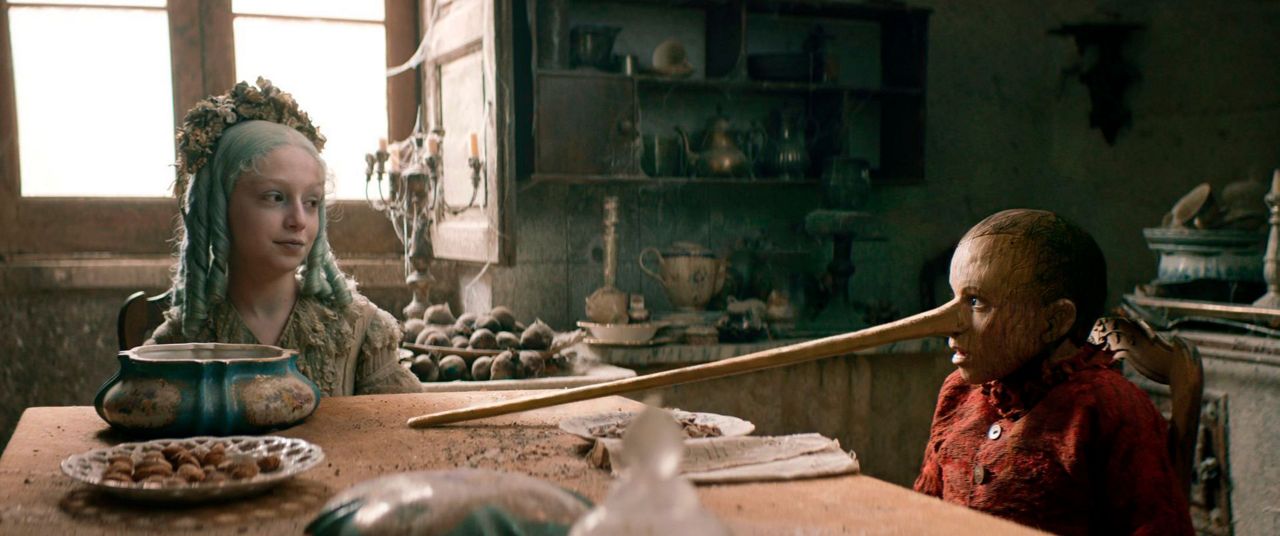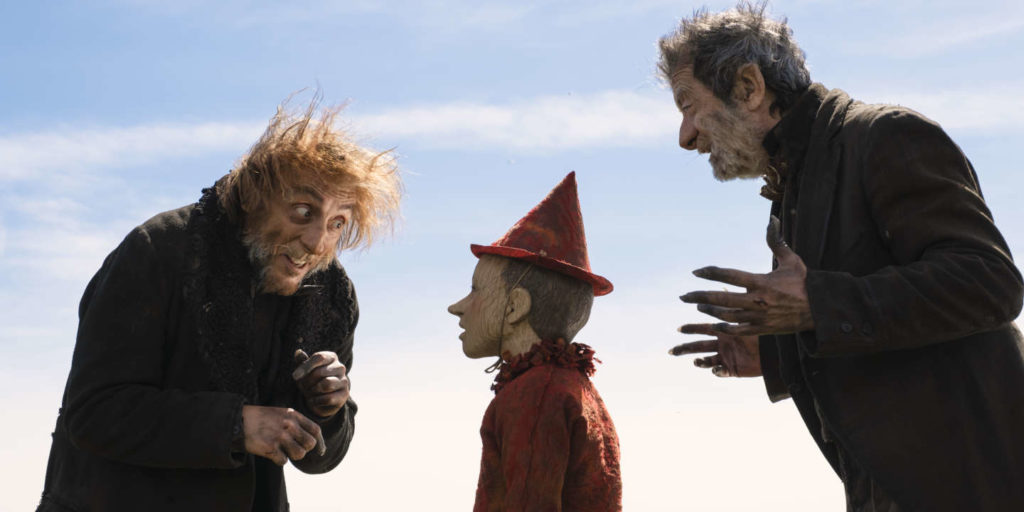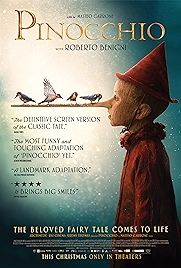To the question: Is there a canonical Pinocchio I can enjoy in movie form, the answer is “Yes, this one by Matteo Garrone”. It takes Carlo Collodi’s story back to its origins – it’s about a lump of magic wood being carved into a talking puppet by poor woodcarver Gepetto, and then the puppet setting out on a string of adventures all the while wishing he could make the next fantastical leap and become a real boy.
There is no shortage of competition, from a 1911 silent version, through the Disney’s 1940 version to countless others, like the 1957 one starring Mickey Rooney or the 2002 one directed by and starring Roberto Benigni, not to mention 1971’s The Erotic Adventures of Pinocchio. Tagline: “It’s not his nose that grows.”
Benigni also turns up in Garrone’s version, as Gepetto – Pinocchio’s dad, in effect – and though he’s ideal casting as the fiercely proud but punishingly poor father wishing all the good things for his son, Benigni leaves the story early on after Pinocchio is kidnapped by the puppetmaster Mangiafuoco.
This sets Pinocchio (Federico Ielapi) off on his adventure in fits and starts, with the Fox and the Cat and the Fairy with the Turquoise Hair (Marine Vacth) the most notable characters met on the way through a journey which is, fairy tale stuff stripped away, really a story about relentless child abuse. Pinocchio is stolen, swindled, hanged, turned into a donkey, drowned… and on it goes.
There’s a fantasical and creepy Alice in Wonderland aspect to the story, and Collodi wrote his story around the same time in the mid 19th century. Like Alice it was also first published in instalments, which helps explain the highly episodic nature of the plot.
Garrone dresses it all in a grungey picturesque look – this is a careful blending of the real, the prosthetic and the digitally enhanced. It’s a dark story, as these European tales often are (even Disney’s version is pretty dark), but Garrone gives it a specifically Italian flavour with the use of evocative locations, and conjures up a picture of the Italian rural past. If he’s trying to drag the European fairytale centre of gravity away from the North – from the Grimms and Hans Christian Andersen – he’s succeeding, as he did in a previous excursion into the fairytale, 2015’s Tale of Tales. Meanwhile, Dario Marianelli’s ceaselessly whimsical soundtrack also gives the impression of trying to drag the film away from the dark side.
Picaresque stories have no plot, and the only real complaint about this Pinocchio is that it is a one-damn-thing-after-another experience, though there is a bit of a throughline thanks to the Fox and the Cat, a pair of chiselling chancers played brilliantly by Rocco Papaleo and Massimo Ceccherini, their faces laden with knavery and low cunning, and the film’s best performances.
If your only experience of the story is the Disney version, the diminished role for the talking cricket (Davide Marotta) might cause some concern, and he’s not called Jiminy either, but rest assured Pinocchio’s nose does grow to massive proportions in the lying sequence.
Garrone is not trying to upset the apple cart, he’s trying to honour the story and produce the definitive version of it. Whether it is going to be able to withstand the onslaught in 2022 by two more versions of Pinocchio from two titans of cinema is going to be interesting to watch. Guillermo Del Toro’s is animated and has Christoph Waltz, Tilda Swinton and Ron Perlman in the voice cast. Whereas Robert Zemeckis is directing Disney’s update on its own 1940 property, complete with a cricket called Jiminy. Let battle commence.
Pinocchio – Watch it/buy it at Amazon
I am an Amazon affiliate
© Steve Morrissey 2021


